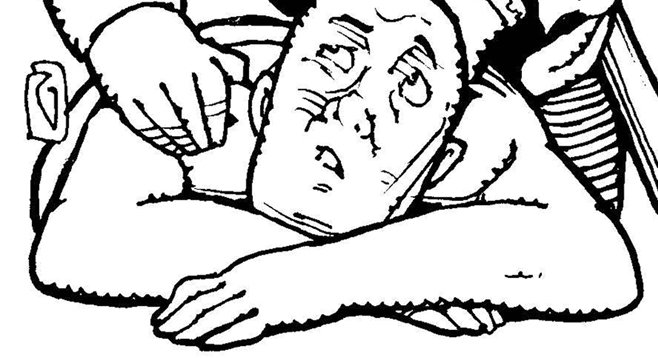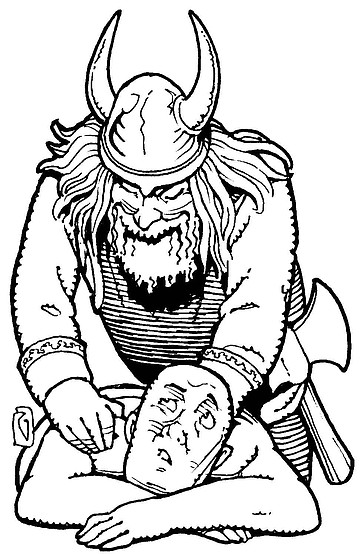 Facebook
Facebook
 X
X
 Instagram
Instagram
 TikTok
TikTok
 Youtube
Youtube

Heymatt:
Massage has been an effective therapy for thousands of years. It started a long time before there was a country called “Sweden.” So, how come it’s called “Swedish massage?”
— E. Gregor, University City

It’s been theorized that massage has its roots in primate grooming practices and that the therapeutic properties of human touch could be as old as our species. In the World of Massage Museum, which I promise exists in Spokane, there’s a collection of massage implements that date back centuries. The prized item is a set of jade knuckles from China, circa 1000 AD. Galen and Hippocrates, the notable physicians of the ancient world, both advocated hands-on therapy to “bind and loosen” joints.
“Swedish massage” refers to a specific way of performing massage. It’s characterized by four basic movements: effleurage (stroking), petrissage (kneading), frictions (rubbing), and tapotement (striking). Those words are actually French, and their application to massage is best attributed to a Dutch (not Swedish!) physician by the name of Johann Mezger, who started using and publicizing them in the late 19th Century. Mezger developed his massage practices in part because of the work of Peter Ling, who was a confirmed Swede (though he never used the word “bork” for anything). Ling had popularized a system of “Swedish gymnastics” years before. It was a series of exercise that included calisthenics, stretching, and massage. Over the years, Mezger’s innovations in massage have been wrongly attributed to Peter Ling so many times that what should rightly be called “Dutch massage,” with all its French words, has become known as Swedish. It’s weird that the error has been allowed to stick because Europeans hate nothing more than getting their nationalities wrong. Try mis-labeling a Swede as Swiss, a Dane as Dutch, or a Scot as Irish... Knots in your back become the least of your worries.
There’s another strange coincidence tied up in this. Ling’s actual invention, Swedish gymnastics, contains lots of instructions for going through movements that incorporate dynamic stretching and balancing. It looks like a yoga class. I read in a yoga magazine that popular yoga might be more derived from Ling’s gymnastics than from any ancient, Indian practices. Hinduism 101 tells us that “yoga” esoterically means something like “method” and that it’s vaguely applicable to numerous ways of being a devoted religious person from India. There are parts of Indian spiritual practice that include demanding physical challenges but a lot of what we know as yoga may be re-badged Swedish gymnastics. Peter Ling (and Sweden) gets undeserved credit for massage, and zero credit for the thing he actually did invent, which is totally borked, if you ask me.
Heymatt:
Over the past few years I have noticed a string or wire hung for blocks from street lights and buildings high above El Cajon Boulevard in the College Area as far east as 70th St. Do you know their purpose? I’m wondering if it’s an “eruv?”
— Jane Peterson, La Mesa
Those strings and wires, in conjunction with existing structures such as fences and utility poles, constitute the triangular eruv that’s bordered by Collwood Boulevard on the west, Montezuma on the north, and El Cajon Boulevard on the south side. It encompasses a significant portion of the College Area; including the Beth Jacob synagogue, which is responsible for the eruv’s upkeep. The eruv’s purpose is to ease some restrictions on members of the Jewish community during Shabbos, specifically the prohibition against “carrying” during the Sabbath day. It’s forbidden to carry some items at all during Shabbos, and for others it is only forbidden to carry them across the boundary between public and private spaces. This has historically created a problem for Jewish people living in large communities. How are you supposed to lock your door when you go to temple if you can’t carry your keys outside your home?
The historical answer to that question has been the eruv. Its poles and wires represent the posts and lintels of a door frame and together they compose a symbolic “wall of doors” that demarcates a shared private space for members of the community. That way, people can leave their homes without crossing into public space and desecrating Shabbos by carrying items that would be otherwise prohibited. This is a great mitvah for people with babies, because they can use strollers, and the elderly, who might need walkers or other devices to get around. Items and activities that are muktzah (i.e., totally prohibited in private space or not) during Shabbos remain so within the bounds of the eruv. Just because the eruv is there doesn’t mean people can start driving their cars and playing neighborhood pickup games of kickball in the streets! Walter still couldn’t “roll on Shabbos” in The Big Lebowski, even if there was an eruv. The generations of rabbis who devised and refined the idea of constructing an eruv have agreed that its purpose is to enhance the holiness of Shabbos, not diminish it. The greater sense of community that the eruv fosters should add to the aura and majesty of the Shabbos, when Jewish people are supposed to devote themselves to quiet contemplation rather than industrious activities such as work and sport.


Heymatt:
Massage has been an effective therapy for thousands of years. It started a long time before there was a country called “Sweden.” So, how come it’s called “Swedish massage?”
— E. Gregor, University City

It’s been theorized that massage has its roots in primate grooming practices and that the therapeutic properties of human touch could be as old as our species. In the World of Massage Museum, which I promise exists in Spokane, there’s a collection of massage implements that date back centuries. The prized item is a set of jade knuckles from China, circa 1000 AD. Galen and Hippocrates, the notable physicians of the ancient world, both advocated hands-on therapy to “bind and loosen” joints.
“Swedish massage” refers to a specific way of performing massage. It’s characterized by four basic movements: effleurage (stroking), petrissage (kneading), frictions (rubbing), and tapotement (striking). Those words are actually French, and their application to massage is best attributed to a Dutch (not Swedish!) physician by the name of Johann Mezger, who started using and publicizing them in the late 19th Century. Mezger developed his massage practices in part because of the work of Peter Ling, who was a confirmed Swede (though he never used the word “bork” for anything). Ling had popularized a system of “Swedish gymnastics” years before. It was a series of exercise that included calisthenics, stretching, and massage. Over the years, Mezger’s innovations in massage have been wrongly attributed to Peter Ling so many times that what should rightly be called “Dutch massage,” with all its French words, has become known as Swedish. It’s weird that the error has been allowed to stick because Europeans hate nothing more than getting their nationalities wrong. Try mis-labeling a Swede as Swiss, a Dane as Dutch, or a Scot as Irish... Knots in your back become the least of your worries.
There’s another strange coincidence tied up in this. Ling’s actual invention, Swedish gymnastics, contains lots of instructions for going through movements that incorporate dynamic stretching and balancing. It looks like a yoga class. I read in a yoga magazine that popular yoga might be more derived from Ling’s gymnastics than from any ancient, Indian practices. Hinduism 101 tells us that “yoga” esoterically means something like “method” and that it’s vaguely applicable to numerous ways of being a devoted religious person from India. There are parts of Indian spiritual practice that include demanding physical challenges but a lot of what we know as yoga may be re-badged Swedish gymnastics. Peter Ling (and Sweden) gets undeserved credit for massage, and zero credit for the thing he actually did invent, which is totally borked, if you ask me.
Heymatt:
Over the past few years I have noticed a string or wire hung for blocks from street lights and buildings high above El Cajon Boulevard in the College Area as far east as 70th St. Do you know their purpose? I’m wondering if it’s an “eruv?”
— Jane Peterson, La Mesa
Those strings and wires, in conjunction with existing structures such as fences and utility poles, constitute the triangular eruv that’s bordered by Collwood Boulevard on the west, Montezuma on the north, and El Cajon Boulevard on the south side. It encompasses a significant portion of the College Area; including the Beth Jacob synagogue, which is responsible for the eruv’s upkeep. The eruv’s purpose is to ease some restrictions on members of the Jewish community during Shabbos, specifically the prohibition against “carrying” during the Sabbath day. It’s forbidden to carry some items at all during Shabbos, and for others it is only forbidden to carry them across the boundary between public and private spaces. This has historically created a problem for Jewish people living in large communities. How are you supposed to lock your door when you go to temple if you can’t carry your keys outside your home?
The historical answer to that question has been the eruv. Its poles and wires represent the posts and lintels of a door frame and together they compose a symbolic “wall of doors” that demarcates a shared private space for members of the community. That way, people can leave their homes without crossing into public space and desecrating Shabbos by carrying items that would be otherwise prohibited. This is a great mitvah for people with babies, because they can use strollers, and the elderly, who might need walkers or other devices to get around. Items and activities that are muktzah (i.e., totally prohibited in private space or not) during Shabbos remain so within the bounds of the eruv. Just because the eruv is there doesn’t mean people can start driving their cars and playing neighborhood pickup games of kickball in the streets! Walter still couldn’t “roll on Shabbos” in The Big Lebowski, even if there was an eruv. The generations of rabbis who devised and refined the idea of constructing an eruv have agreed that its purpose is to enhance the holiness of Shabbos, not diminish it. The greater sense of community that the eruv fosters should add to the aura and majesty of the Shabbos, when Jewish people are supposed to devote themselves to quiet contemplation rather than industrious activities such as work and sport.
Comments